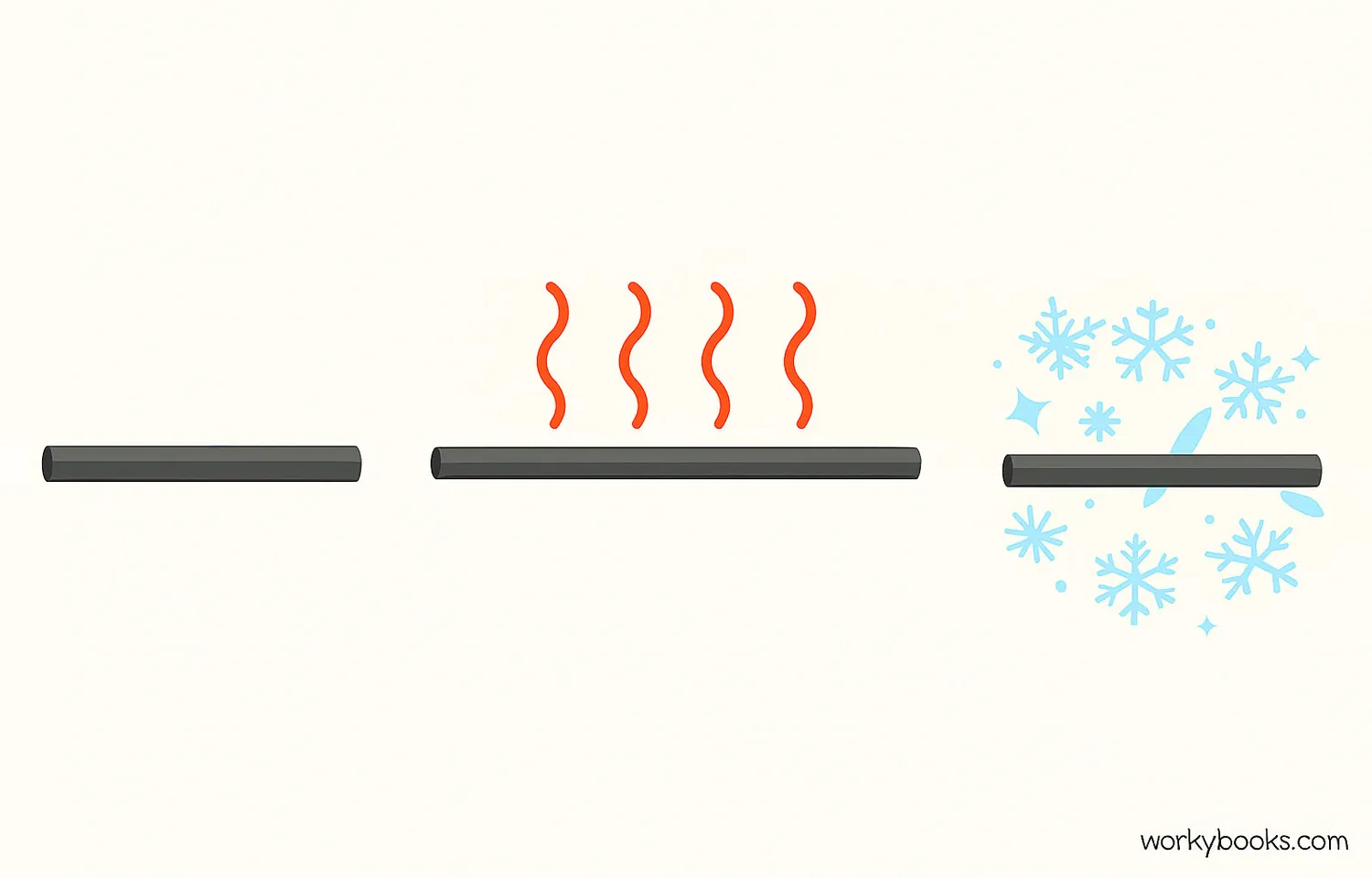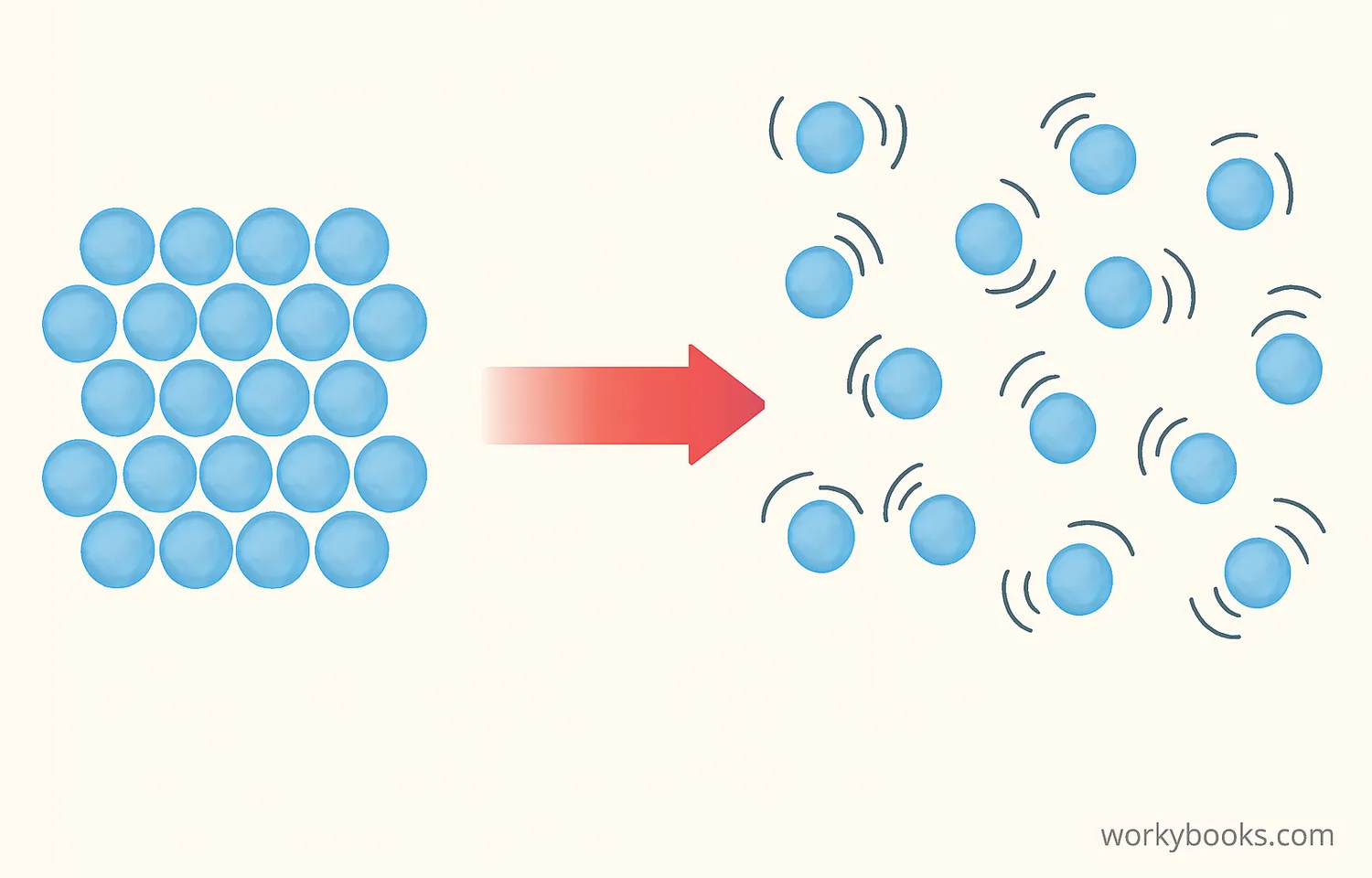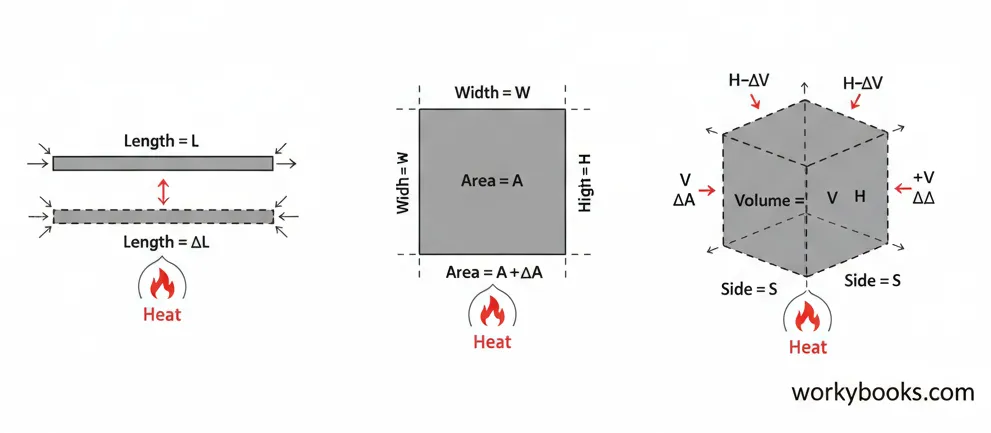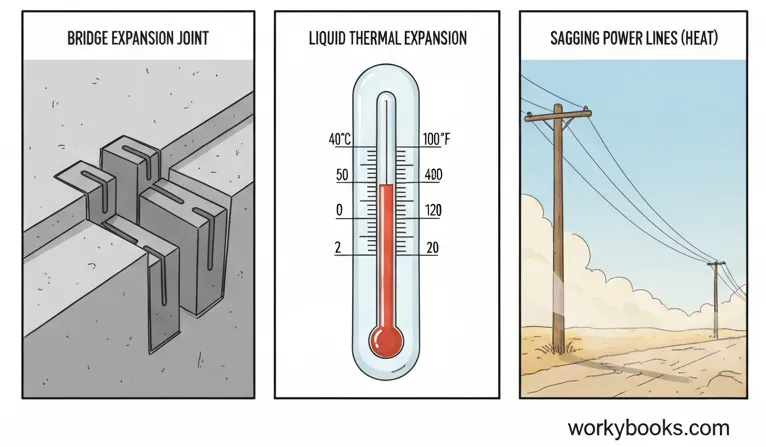Thermal Expansion - Definition, Examples, Quiz, FAQ, Trivia
Understanding How Materials Change With Temperature
What is Thermal Expansion?

Thermal expansion is what happens to materials when they are heated or cooled. When things get warmer, they usually expand or get bigger. When they cool down, they contract or get smaller.
Think of it like this: when you heat something, the particles inside it start moving faster and need more space to move around. This makes the material expand. When you cool it down, the particles slow down and need less space, so the material contracts.
Science Fact!
Almost all materials expand when heated, but they do so at different rates. This is why we have the coefficient of thermal expansion to measure how much a material expands per degree of temperature change.
How Thermal Expansion Works

At the tiny molecular level, all materials are made of particles that are constantly vibrating. When we heat a material, we add energy to these particles, making them vibrate faster and push against each other with more force. This causes the material to expand.
Adding Heat
Energy is added to the material, increasing particle motion
Increased Vibration
Particles vibrate faster and push against each other
Expansion
The material expands as particles need more space
Cooling
When cooled, particles slow down and need less space
Contraction
The material contracts or shrinks
The amount that a material expands can be calculated using this formula:
Where:
ΔL = Change in length
α = Coefficient of thermal expansion
L₀ = Original length
ΔT = Change in temperature
Types of Thermal Expansion

Thermal expansion can happen in different ways depending on the material and how it's constrained:
Linear Expansion
Expansion in one direction (length). Important for rails, bridges, and roads.
Area Expansion
Expansion in two dimensions (surface area). Important for sheets and plates.
Volume Expansion
Expansion in three dimensions. Important for liquids and gases.
Most solids expand in all directions when heated, but we often measure the type that's most important for how the material is used. For example, we care about linear expansion for railroad tracks, but volume expansion for liquids in thermometers.
Important Exception!
Water is unusual because it expands when it freezes (instead of contracting). This is why ice floats on water and why pipes can burst in winter.
Examples of Thermal Expansion

Thermal expansion isn't just a science concept—it affects our daily lives! Engineers must account for expansion in their designs. Here are some common examples:
Expansion Joints
Gaps in bridges, buildings, and sidewalks that allow materials to expand without cracking
Thermometers
Liquid inside expands and rises up the tube as temperature increases
Power Lines
Wires sag more on hot days because they expand in length
Jar Lids
Running hot water over a tight lid makes it expand and easier to open
Railroad Tracks
Small gaps between rails allow for expansion on hot days
Understanding thermal expansion helps engineers design structures that are safe and last longer. Without accounting for expansion, bridges could buckle, pipes could burst, and buildings could develop cracks.
Thermal Expansion Quiz
Test your knowledge with this quiz! Answer all 5 questions to see how much you've learned about thermal expansion.
Frequently Asked Questions
Here are answers to some common questions about thermal expansion:
Science Facts About Thermal Expansion
Discover some fascinating facts about thermal expansion!
Eiffel Tower Height
The Eiffel Tower in Paris can be up to 15 cm (6 inches) taller in summer due to thermal expansion of the iron structure on hot days!
Railroad Engineering
Before modern expansion joints, railroad tracks would sometimes buckle on extremely hot days, causing derailments. This is called "sun kink."
Pyrex Innovation
Pyrex glass was specially developed to have a low coefficient of thermal expansion so it wouldn't crack when moved from oven to room temperature.
Bimetallic Strips
Some thermostats use bimetallic strips made of two metals with different expansion rates bonded together. When heated, the strip bends and can trigger a switch.


